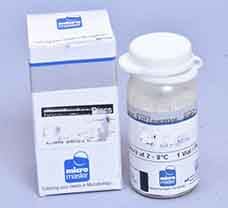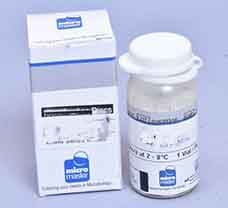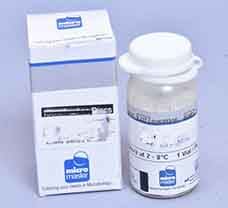
Xylose Lysine Deoxycholate Agar (XLD Agar) Plate-60PL
- Brand: Micromaster
- Catalog No.: RP033-60PL
- Quantity/Unit: 60PL/Pack
Xylose-Lysine Deoxycholate Agar (XLD Agar) Plate is supplied by Micromaster. It is available in the form of red coloured clear to slightly opalescent gel in petri plates, which has a pH in the range of 7.2 to 7.6. This product should be stored below 30C in a tightly closed container. Once opened, it should be properly stored, after tightly capping the bottle. Due to the hygroscopic nature of the product, there could be chances of lump formation which can be avoided by proper storage. Store in dry ventilated area protected from extremes of temperature and sources of ignition.
Quantity provided: 60 plates/pack
XLD Agar has been recommended for the identification of Enterobacteriaceae and for the microbiological testing. XLD Agar was formulated by Taylor for the isolation and differentiation of enteric pathogens including Salmonella Typhi from other Salmonella species from food, water and dairy products. XLD Agar is both selective and differential medium. The medium contains yeast extract, which provides nitrogen and vitamins required for growth. Though the sugars xylose, lactose and sucrose provide sources of fermentable carbohydrates, xylose is mainly incorporated into the medium since it is not fermented by Shigellae but practically by all enterics. This helps in the differentiation of Shigella species. Sodium chloride maintains the osmotic balance of the medium. Lysine is included to differentiate the Salmonella group from the non-pathogens. Salmonellae rapidly ferment xylose and exhaust the supply It utilizes sodium deoxycholate as the selective agent and therefore it is inhibitory to gram-positive microorganisms. Some Proteus strains may give red to yellow colouration with most colonies developing black centers, giving rise to false positive reactions. Non-enterics like Pseudomonas and Providencia may exhibit red colonies. S.Paratyphi A, S.Choleraesuis, S.Pullorum and S.Gallinarum may form red colonies without H2S, thus resembling Shigella species.







